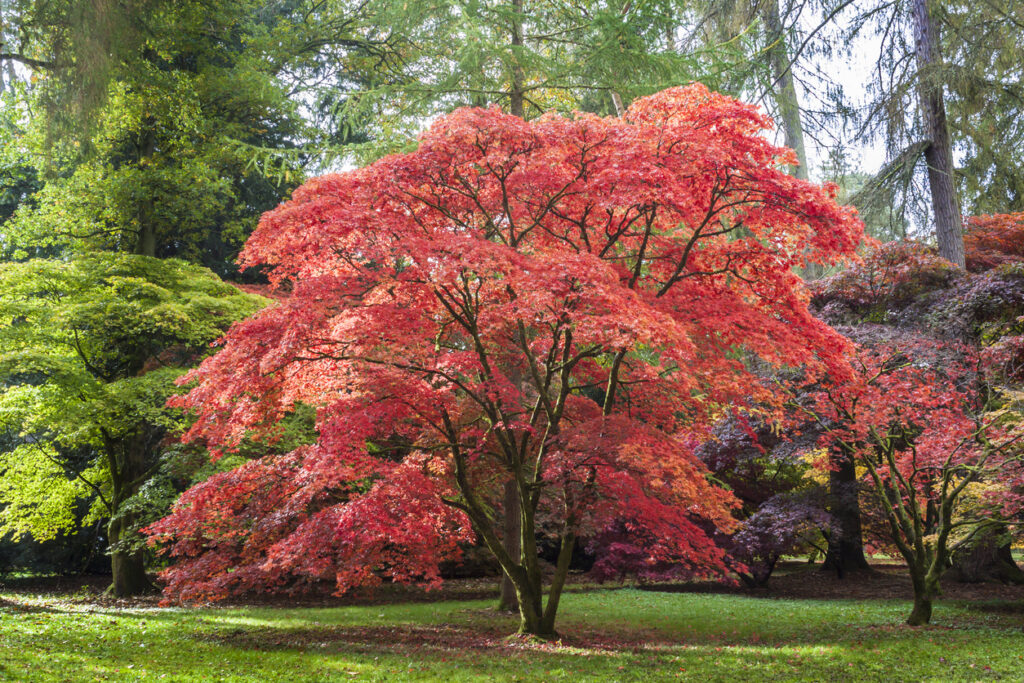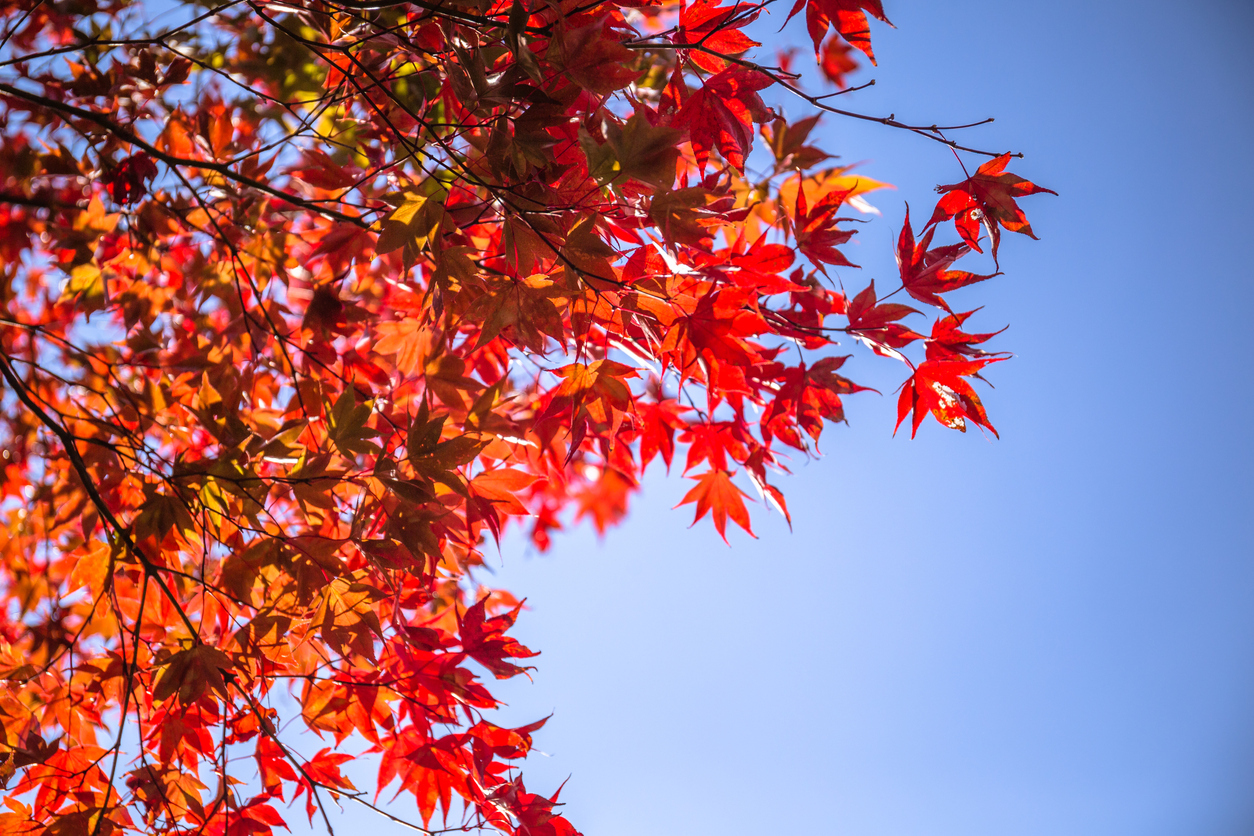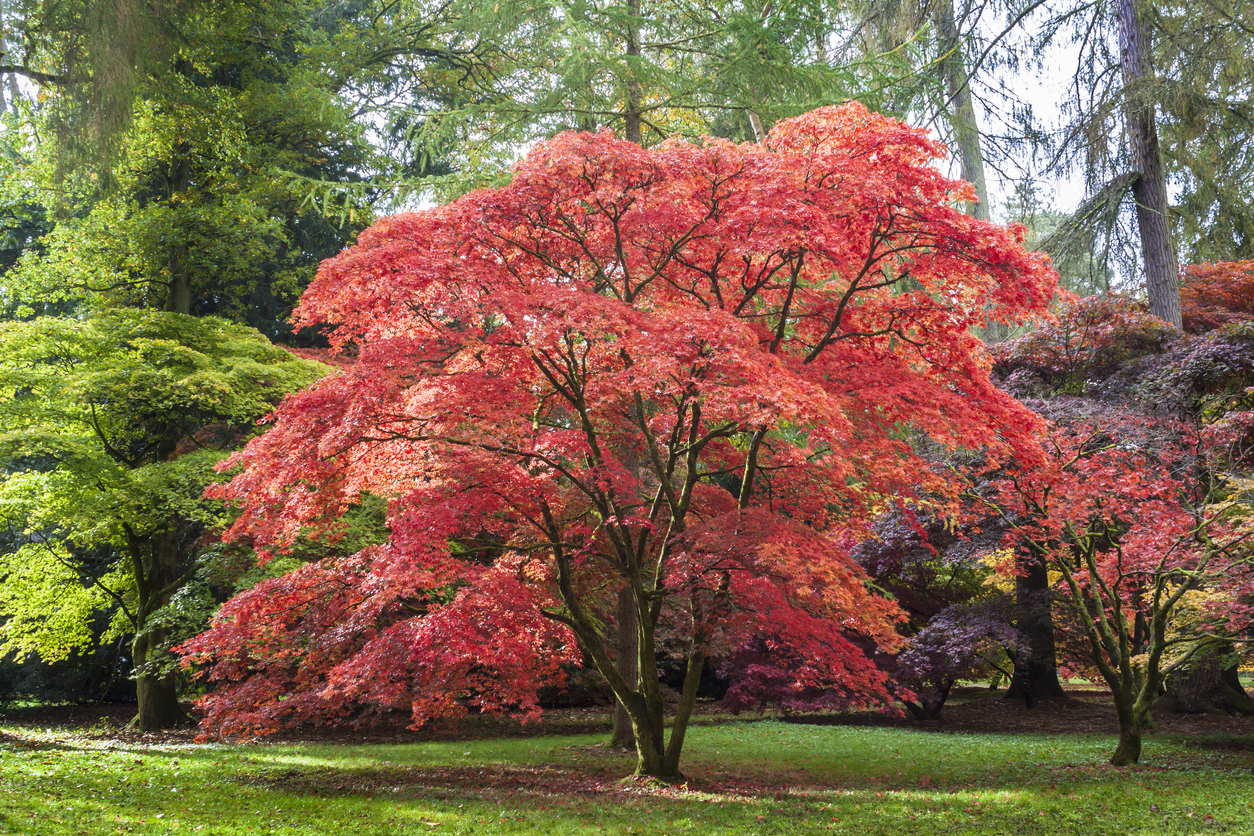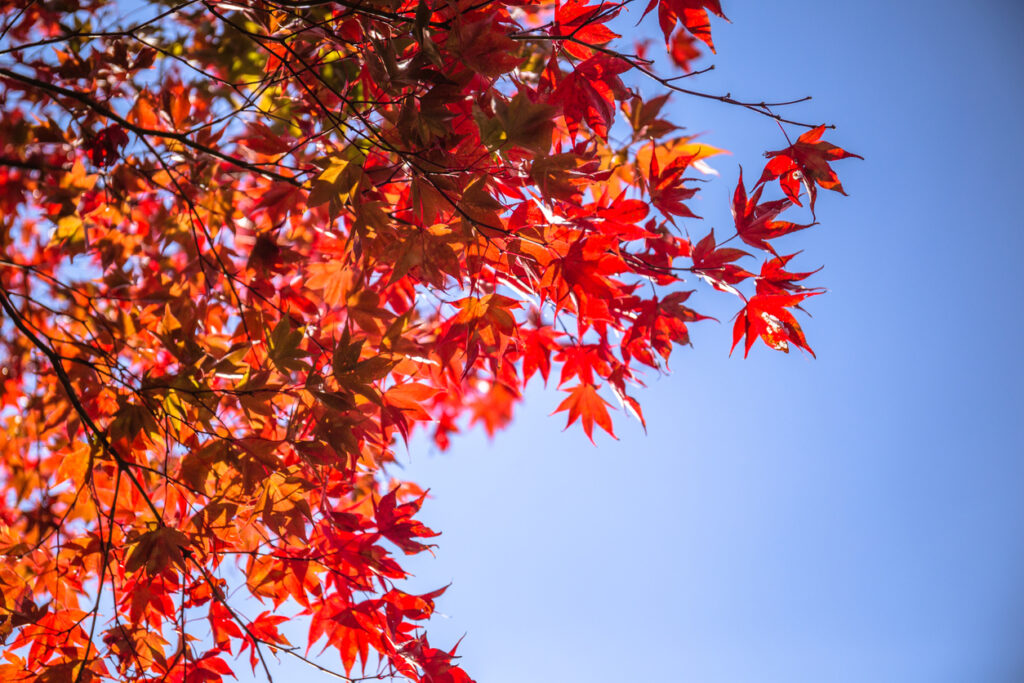Japanese Maple Care – How To Grow And Care For A Japanese Maple Tree
The Japanese maple is a delightful compact tree that you can grow in a container or in your garden. Between its graceful posture and colorful foliage, it’s easy to see why the small tree which originated in Eastern Asia has conquered the hearts and minds of early Europeans who brought it back home in the 1800s.

The Japanese maple is surprisingly easy to grow and doesn’t require much space to flourish. You can plant it in your tiny garden or side yard and enjoy its exquisite beauty and fiery colors in the fall. Once you have it growing, the tree requires little care or maintenance. So even if you have little or zero experience with trees before, this maple will be a good way to start.
All about the Japanese Maple
Despite its name, the Japanese maple (Acer palmatum) has been growing in other countries besides Japan for thousands of years. The compact tree, which is also known as smooth Japanese maple and palmate maple, is also native to Korea, Russia, China, and Mongolia.
New cultivars have made it possible for people in different zones than its original habitat to grow and enjoy this deciduous tree in their gardens. In the US, you can grow it in zones 5 to 8. While in theory, you can still grow it in zones above 8, the leaves are susceptible to scorching when they get exposed to the garish summer sun. In colder zones, the tree doesn’t survive harsh winters either.
The mature maple tree average anything between 2 to 30 feet depending on the cultivar you choose. With proper maintenance and regular pruning, you can grow it in a container. Similarly, the tree has many forms. Some cultivars have cascading foliage, while others grow upright or take a dwarfish form.
But it’s the leaves that steal the show with their shape and colors. The often lacy and delicate leaves change their spectacular colors a few times according to the season. These colors range from orange and red to green, pink, purple, and even white. If the normal color of the leaves is green in the spring, then there’s a good chance it will turn pink in the summer and purplish-red in the fall. The color spectrum the foliage of the Japanese maple goes through varies depending on the cultivar, weather conditions, and soil type.
In the winter, the tree sheds all its leaves and goes dormant until the next spring.
Japanese Maple Varieties
As the old saying which I just came up with goes, you can’t have too many varieties of a good tree. The more than one thousand cultivars of the Japanese maple are a testament to this tree’s enduring qualities and spectacular beauty. Here are some varieties to choose from.
- Red Dragon: A misnomer since this fiery variety only grows to 7 or 8 feet on average and you can easily grow it in a container. It takes many years for the tree to reach that maximum height thanks to its exceptionally slow growth rate. The deeply veined leaves start purple before they turn apple-red in the fall.
- Coonara Pygmy: Another “dwarf” that reaches about 8 feet tall and wide and is a good candidate as a potted tree. It thrives in partial shade in zones 6 to 8 and has a low tolerance to cold winters. In the spring the green leaves get a pinkish tinge that soon fades in the summer before the whole foliage turns a startling orange-red. Enjoy a festival of colors all year until the winter.
- Green Cascade: This cultivar grows to about 20 feet tall on average and requires support to grow upright. Without support, the tree turns into a mound with cascading shades of green. Best suitable for zones 5 to 7, the leaves turn to a fiery red in the fall.
- Golden Fall Moon Maple: A beautiful name to an even more beautiful cultivar. The tree averages 20 feet high and the same in width and it favors full sun. In the summer the leaves are yellow but turn golden with red tips in the fall. It also grows well in zones 5 to 7.
- Autumn Moon: The red patterns on the yellow leaves in the fall make this a very popular variety. The tree favors partial shade and grows to 25 feet tall and wide. In the summer the trees are usually bright yellow.
For container planting and small gardens, I recommend either the Red Dragon or the Coonara Pygmy. They both have slow growth rates and don’t grow an inch over 8 feet at maturity. If you have more space you can try the Green Cascade and Autumn Moon. They both have dazzling fall colors.
How to Grow the Japanese Maple tree
The Japanese maple tree is a slow-growing tree. That means the best way to grow it is either through grafting or purchasing a small sapling from the nursery. The last option is the most ideal one for many gardeners since it takes all the hard work of starting the tree out of the equation. Here’s how to grow this deciduous tree in your garden in easy steps.
- Before you plant your sapling, you need to choose the right place. The tree will stay in your garden for years so make sure you give it enough space to grow. Also because of its carnival of colors, you want to plant it in a spot where it becomes the focal point of the landscape.
- Clear the area from weeds and debris. Then till the top one foot of the soil and work in about 8 inches of organic materials, aged manure, and compost.
- If the soil in your garden is clay or heavy, you should build a raised bed to plant the tree. This improves drainage and soil aeration since the roots of the tree are sensitive to wet soil.
- Examine the root ball of the young tree and trim away any damaged or entangled roots. Make sure the roots are hydrated before you plant the tree.
- Dig a hole in the soil as deep as the root ball and about one and a half times as wide.
- If the tree requires support, install a stake in the hole before you plant the tree.
- Ease the tree into the hole so that the soil mark on the tree lines up with the top of the hole. Spread the roots of the tree so that they fill out the hole.
- Fill the hole with water and let it absorb into the soil slowly.
- Backfill the hole with soil and organic materials then firm the soil to eliminate air pockets and keep the tree standing upright on its own.
Japanese Maple Care
That’s mainly the hard part of growing the Japanese maple tree. Once the tree’s roots establish, you won’t have to worry about it. Apart from pruning, and watering, all you have to do is sit back and enjoy its festive foliage change color from one season to the next.
Soil
Whether you grow it in a container or in the garden, the best soil for the Japanese maple is loamy or sandy that is slightly acidic but well-drained. If that seems too specific, that’s because this maple doesn’t like to get its feet wet and above all cannot tolerate alkaline soil of any degree or level. Keep the pH levels of the soil between 6.0 to 7.5 for best results. If you’re worried about the drainage rate, dig a hole about 2 inches deep and fill it with water. If an hour passes and the water is still in the hole, then you have poorly draining soil. Mix about 6 inches of coarse sand or perlite and work it into the soil to improve its drainage.
Light
Most cultivars of the Japanese maple grow well in filtered light or partial shade. This is why many trees of this species don’t do well in zones above 8. The hot sun scorches the leaves and the trees show signs of stress as a result. Make sure the tree gets partial shade throughout the year as it grows. This is easy to achieve since the trees take years to reach their full size. So you can plant a fast-growing tree near the Japanese maple to provide shade and dappled sunlight.
Water
The water requirement of this deciduous maple is straightforward. The tree prefers the soil to be moist but not wet. It has a low tolerance to drought so for the first few years, you’ll need to provide the tree with about 2 inches of water a week. Once the tree’s roots establish you can cut back on the irrigation to about once every two weeks. In the winter, the maple needs even less water, and once a month sounds reasonable in cold zones. Use mulching to keep the soil moist during the summer.
Pruning
While both the natural shape and posture of the Japanese maple leave you little room for improvement, you might still have to interfere with your pruning skills every now and then. This is especially true if you’re growing the tree in a container and would prefer to keep its size compact. When pruning the tree, try to keep the original branch structure intact and only trim away the lower branches. Only cut lateral branches if they cross other branches and ruin the majesty of the tree.
Pests and Diseases
For an ornamental tree, anything bug or insect that makes its home on the Japanese maple will stick out. So watch out for Japanese beetles, scales, mealybugs, aphids, and spider mites. They feed on the leaves and damage the beauty of the foliage. It is easy to get rid of these pests thanks to the low stature of the tree. Chase the bugs off the tree with a strong stream of water from a garden hose.
Anthracnose is a serious disease that covers the leaves with dark spots and results from lack of ventilation and high humidity. Ensure the tree has good air circulation around it to prevent this lethal disease.


